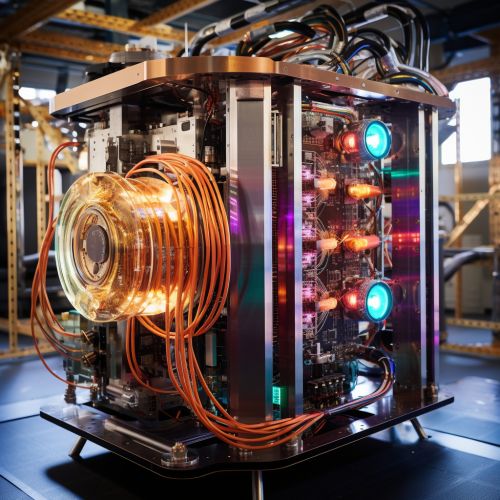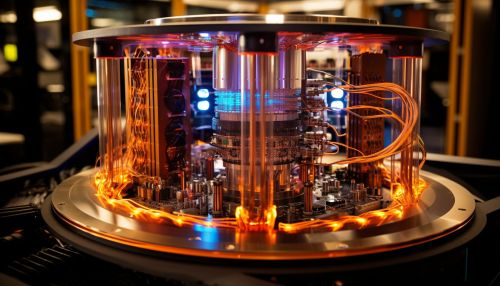Quantum Optics
Introduction
Quantum optics is a branch of quantum physics that focuses primarily on the behavior of light, or photons, and their interactions with matter at the quantum level. It is a field that merges quantum mechanics, the study of the microscopic world, with optics, the study of light. This discipline has been instrumental in advancing our understanding of quantum phenomena and has led to the development of technologies such as quantum computing and quantum cryptography.


Historical Background
The origins of quantum optics can be traced back to the early 20th century, with the advent of quantum mechanics. The concept of light behaving both as a particle and a wave, known as wave-particle duality, was a fundamental aspect of this new theory. This was a significant departure from classical physics, which treated light purely as a wave.
In 1905, Albert Einstein proposed the idea of 'light quanta', now known as photons, in his explanation of the photoelectric effect. This was one of the earliest indications of the particle-like behavior of light. However, it was not until the 1920s and 1930s that the full quantum mechanical treatment of light was developed, primarily by Paul Dirac and others.
The term 'quantum optics' was coined in the 1960s, following the invention of the laser. The laser, with its ability to produce coherent light, opened up new possibilities for studying the quantum properties of light. Since then, the field of quantum optics has expanded rapidly, with many significant discoveries and developments.
Fundamental Concepts
Quantum optics is based on several fundamental concepts derived from quantum mechanics and optics. These include:
Photons
Photons are the quantum mechanical particles of light. They are considered to be both particles and waves, exhibiting properties of both depending on how they are observed. This is known as wave-particle duality.
Quantum States
In quantum optics, the state of a system is described by a quantum state, which is a mathematical entity that provides a complete description of the system's physical properties. Quantum states can exist in superpositions, where they are in multiple states at once, until measured.
Entanglement
Quantum entanglement is a phenomenon where two or more particles become linked and the state of one particle instantly affects the state of the other, no matter the distance between them. This phenomenon has been used in quantum optics to create entangled photons, which have applications in quantum information and communication.


Coherence
Coherence refers to the phase relationship between different parts of a wave. In quantum optics, coherence is a fundamental property of light that is exploited in many applications, such as lasers and interferometers.
Applications of Quantum Optics
Quantum optics has a wide range of applications in various fields, including:
Quantum Computing
Quantum optics plays a crucial role in the development of quantum computers, which use quantum bits, or qubits, instead of classical bits to perform computations. Photons are often used as qubits in quantum computing due to their ability to maintain coherence over long distances.
Quantum Cryptography
Quantum cryptography, specifically quantum key distribution, uses the principles of quantum optics to create secure communication channels. It exploits the quantum mechanical properties of photons, such as superposition and entanglement, to ensure the security of the transmitted information.
Quantum Metrology
Quantum metrology uses quantum mechanics to make precise measurements. Quantum optics is used in this field to improve the precision and accuracy of measurements of physical quantities, such as time, distance, and gravitational fields.


Future Directions
The field of quantum optics continues to evolve and expand, with many exciting potential future directions. These include the development of quantum networks, where quantum information can be transmitted over long distances, and the exploration of quantum phenomena in biological systems, a field known as quantum biology.
